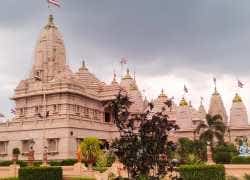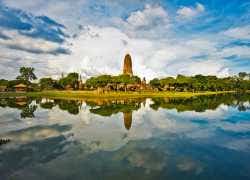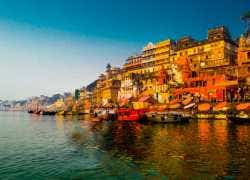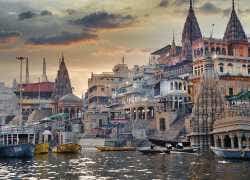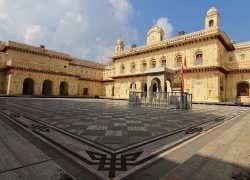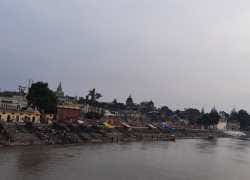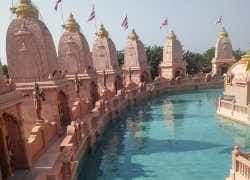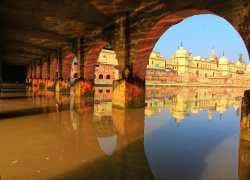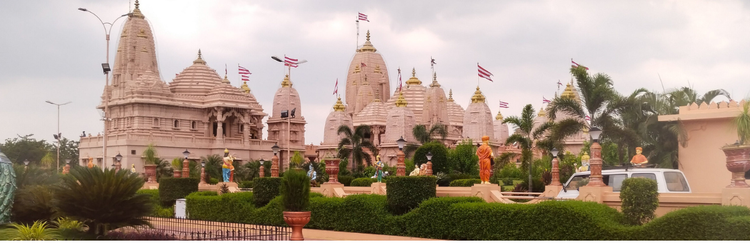
Ayodhya Varanasi6 Day 3 Cities Varanasi, Prayagraj, Sarnath |
|
Ayodhya: Steeped in historical and spiritual significance, the Ayodhya tour takes you on a journey through the heart of India’s rich cultural heritage. Known as the birthplace of Lord Rama, Ayodhya is a revered pilgrimage destination for Hindus. The city is adorned with ancient temples, sacred ghats, and historical monuments that echo the tales of the Ramayana. The serene banks of the Sarayu River and the magnificent Ram Janmabhoomi temple complex are just a few of the highlights that captivate visitors with their spiritual aura and architectural grandeur. This tour offers a deep dive into the spiritual and historical essence of India. Walking through the ancient streets of Ayodhya, you will encounter a blend of vibrant traditions and timeless legends. The city's tranquil atmosphere, coupled with its rich cultural tapestry, provides a unique experience for those seeking both spiritual solace and historical exploration. Whether attending the mesmerizing evening aarti on the Sarayu River or exploring the numerous temples and ashrams, the Ayodhya tour promises an enriching journey into India's sacred heritage. |
Tour FAQ
What are some safety tips for traveling to Ayodhya?
- Avoid visiting during religious festivals if you prefer a less crowded experience.
- Dress modestly to respect local customs and religious sentiments.
- Keep your belongings secure and be mindful of pickpockets in crowded areas.
- Carry a copy of your identification and travel documents.
- Stay hydrated and avoid street food if you have a sensitive stomach.
- Be cautious of local traffic and prefer walking or using rickshaws in crowded areas.
What are the must-visit attractions in Ayodhya?
- Ayodhya is rich in history and spirituality, offering several must-visit attractions:
- Ram Janmabhoomi Temple: The birthplace of Lord Rama and a major pilgrimage site.
- Hanuman Garhi: A 10th-century temple dedicated to Lord Hanuman.
- Kanak Bhawan: A temple dedicated to Lord Rama and Sita, known for its beautiful architecture.
- Treta Ke Thakur: A temple that houses idols believed to have been installed by Lord Rama.
- Gulab Bari: The tomb of Nawab Shuja-ud-Daula, surrounded by rose gardens.
- Ramkatha Park: A landscaped park that hosts cultural and religious events.
- Guptar Ghat: A serene spot along the Saryu River, where it is believed that Lord Rama ascended to heaven.
When is the best time to visit Ayodhya?
- The best time to visit Ayodhya is during the cooler months from October to March. The weather is pleasant for sightseeing and outdoor activities. Avoid the summer months (April to June) when temperatures can be quite high, and the monsoon season (July to September) due to potential heavy rains.
How can I prepare for a trip to Ayodhya regarding health and essentials?
Preparing for a trip to Ayodhya involves packing essential items and taking necessary health precautions:
- Wear comfortable and modest clothing.
- Bring sunscreen, sunglasses, and a hat to protect against the sun.
- Carry a reusable water bottle to stay hydrated.
- Have a basic first aid kit with essential medications.
- Pack comfortable footwear for walking.
- Ensure you have necessary travel documents and identification.
What unique experiences can I expect on an Ayodhya tour?
A tour of Ayodhya offers unique experiences that reflect its historical and religious significance:
- Spiritual Walks: Explore the various temples and ghats along the Saryu River.
- Cultural Insights: Attend religious ceremonies and listen to Ramayana recitations.
- Local Cuisine: Enjoy traditional North Indian food and sweets.
- Historic Sites: Visit ancient temples and monuments that tell the story of Lord Rama.
- River Saryu: Spend time at the ghats of the Saryu River, experiencing its serene and spiritual atmosphere.
- Festivals: Witness grand celebrations during festivals like Ram Navami and Diwali, which are celebrated with great fervor in Ayodhya.
- These experiences make a trip to Ayodhya both spiritually enriching and culturally rewarding.
How many days are required to visit Varanasi and Ayodhya?
- A minimum of 3 days is recommended for Varanasi to cover key attractions such as the Kashi Vishwanath Temple, Dashashwamedh Ghat, Sarnath, and a boat ride on the Ganges. Ayodhya can typically be covered in 1-2 days, including visits to Ram Janmabhoomi, Hanuman Garhi, and other important temples.
Which is the best time for a Varanasi trip?
- The best time to visit Varanasi is between October to March when the weather is cooler and more pleasant. The months of November and December are particularly special, with festivals like Diwali and Dev Deepawali offering a vibrant cultural experience.
Which ghat is best for Ganga Aarti?
- Dashashwamedh Ghat is the most popular and is known for the grand Ganga Aarti held every evening. The Aarti at this ghat is a spectacular spiritual experience and attracts large crowds of devotees and tourists alike.
How far is Kashi from Varanasi?
- Kashi is another name for Varanasi, so they refer to the same place. There is no distance between Kashi and Varanasi—they are one and the same city.
What is the cost of a boat ride in Ganga Aarti?
- Boat rides in Varanasi, especially during Ganga Aarti, usually cost between ₹100 to ₹500, depending on the type of boat, time of day, and duration. A private boat ride will typically be more expensive than a shared ride.
Which is the most beautiful ghat in Varanasi?
- Assi Ghat and Dashashwamedh Ghat are considered among the most beautiful in Varanasi. Assi Ghat is quieter and less crowded, offering a peaceful atmosphere, while Dashashwamedh Ghat is famous for its vibrant evening Ganga Aarti.
Which month is crowded in Varanasi?
- Varanasi is most crowded during the winter months (October to March), especially around festivals like Diwali, Dev Deepawali, and Makar Sankranti. The city sees a large influx of pilgrims and tourists during these times.
How far is Ayodhya from Varanasi?
- The distance between Varanasi and Ayodhya is approximately 200 km by road. It takes about 5-6 hours to drive between the two cities. There are also train and bus options available.
Tour Gallery
